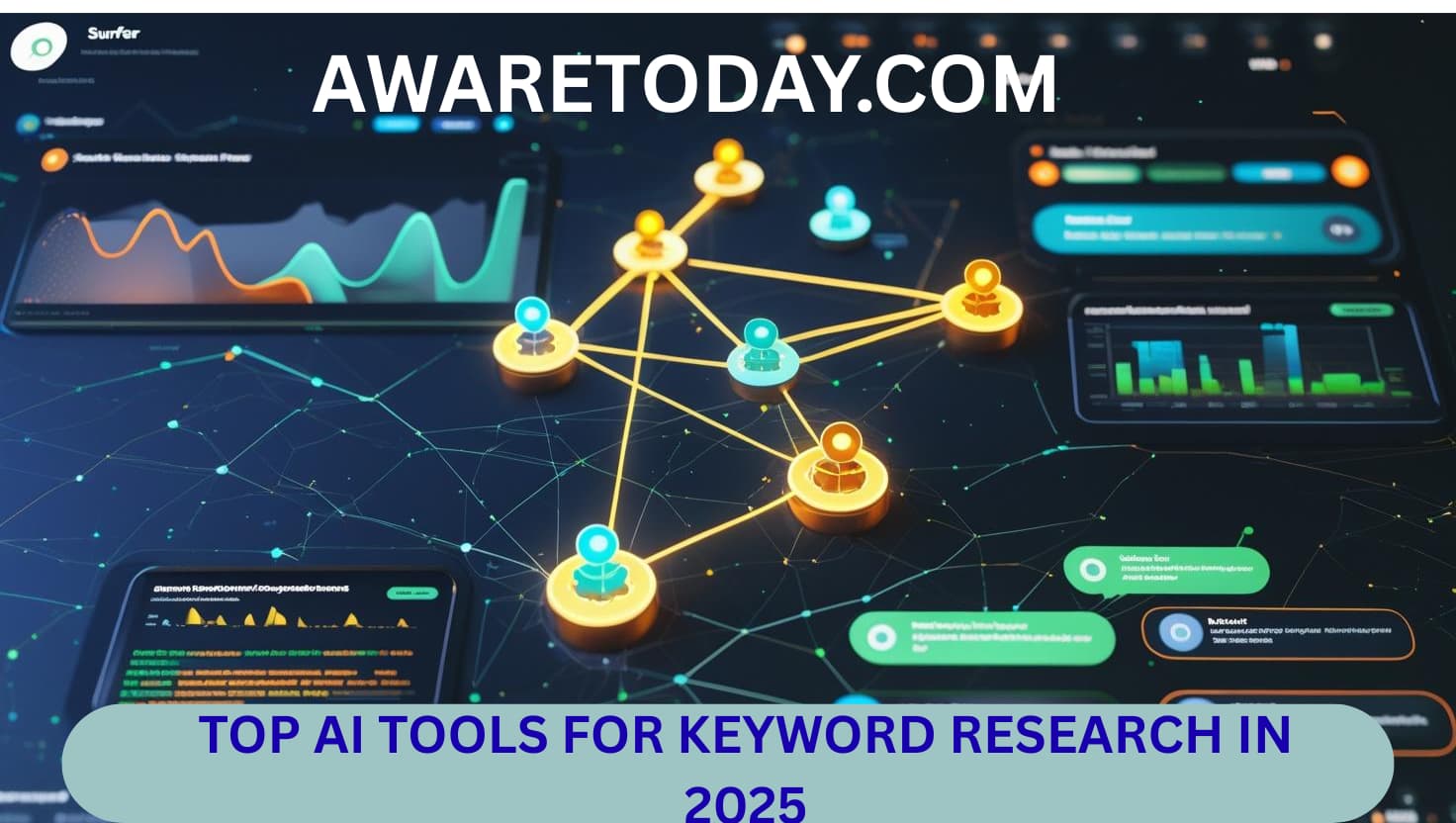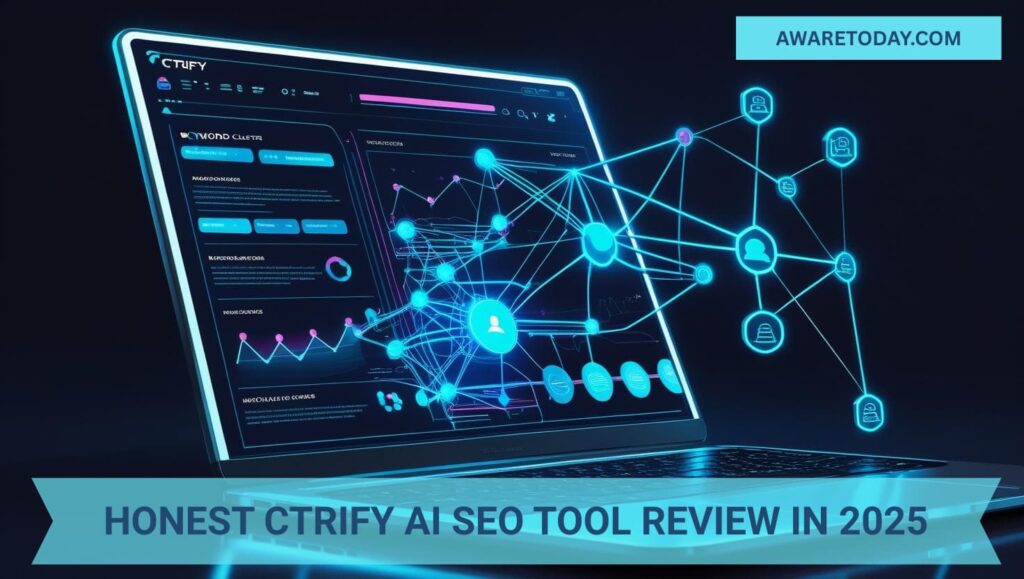Top AI Tools for Keyword Research in 2025
Which AI tool is “the best” for keyword research in 2025? There isn’t a single winner but there is a clear short‑list. Do you want rapid topic clustering and on‑page guidance? Surfer SEO remains the fastest way to move from idea to outline.
Do you manage an enterprise‑scale site with complex backlink data? Semrush’s Keyword Magic Tool (now super‑charged by AI) still has the broadest dataset. Do you care less about blue links and more about how ChatGPT or Google SGE cites your brand? Newcomer platforms such as Athena and Scrunch AI give you an edge. Are you building fully fledged content hubs? Keyword Insights or Frase will save you hours of manual clustering.
This summary only scratches the surface. It does not directly answer the headline question. The real value comes from understanding why each platform excels. You also understand where it fits in your workflow. Also how you can combine two or three tools to cover every stage of modern search..
Let’s dive in:
The Search Landscape Has Shifted, Your Toolkit Should Too
Over the past eighteen months, Google has rolled out its Search Generative Experience. Bing has doubled down on Deep Search. Open‑domain chatbots like ChatGPT and Perplexity have moved millions of queries away. A wave of vendors including Athena and Scrunch AI has raised fresh capital. They promised the users “AI visibility” rather than rank‑tracking alone.
At the same time, legacy SEO suites have not stood still. Tools like SEMrush and Ahrefs now use GPT‑class language models directly. They use it directly in their keyword explorers. This allows users to surface deeper semantic insights and keyword variations faster. Meanwhile, platforms such as Surfer and NeuronWriter have changed their keyword clustering engines. Instead of focusing on a single‑phrase, they now empower writers to generate outlines. These outlines have greater depth. These outlines better reflect semantic breadth and accurately capture user intent
Even advanced AI agent frameworks like SuperAGI have joined the evolution. They introduced specialized keyword modules that mimic the behaviors of an SEO analyst. These modules analyze competition and build strategy recommendations at machine speed. This offers a significant edge in campaign planning and real-time adaptation.
The first step in choosing a stack is understanding the evaluation criteria. Accuracy still plays a role. However, in 2025, ‘accuracy’ means predicting future intent. It also means mapping keyword clusters to AI-generated answer boxes. It’s not limited to just reporting yesterday’s search volume.
How We Evaluated the Tools
We use four modern benchmarks:
Semantic clustering quality: Does the tool group turn related queries into a meaningful topic?
Intent recognition: Can it label queries as informational, commercial, or transactional? Can it update those labels as trends shift?
AI‑SERP readiness: Does it track visibility inside answers from Google SGE or ChatGPT?
Workflow integration: Does it export briefs that plug into writing or BI pipelines?
With those benchmarks in mind, let’s look at the tools making waves this year. Let’s start with the most accessible platforms and work our way toward the more specialized ones.
Surfer SEO: Speed for Content‑First Teams
Surfer’s appeal has always been its tight feedback loop between keyword research and SERP analysis. In 2025 that loop is even tighter. You type a topic, “carbon‑neutral shipping” and within seconds the tool surfaces. It’s not limited to the related phrases but also the headings, entities and internal links. Surfer’s new Grow Flow feature uses GPT‑4‑class embeddings to monitor ranking shifts. It also recommends weekly optimisation tasks. For small to mid‑sized sites that publish frequently, Surfer remains a valuable tool. It provides the quickest path from idea to live post, even with a limited SEO headcount.
Semrush Keyword Magic Tool (AI Edition): Depth for Enterprises
Semrush has more than 25 billion rows in its keyword database. It owns the “deepest data” slot. The 2025 refresh adds intent classification at scale and Surround Sound module. For teams juggling paid search and digital PR, this breadth matters. Semrush’s reports fold keyword gaps, SERP features, and backlink health into one view. This is for quarterly road‑maps or executive dashboards. The trade‑off is cost and complex; smaller businesses may find it difficult to learn.
Ahrefs Keywords Explorer with AI Enhancements: Competitive Intelligence
Ahrefs built its reputation on backlink analytics. The company has leaned on that heritage in its AI rollout. The 2025 edition introduces traffic potential prediction and smart difficulty scores. Marketers can now see estimated real clicks. This is useful in SERPs where snippets or video results divert user attention.
For competitive and niche analysis, Ahrefs’ dataset provides clarity. Its new parent‑topic detection helps avoid displacing existing pages.
NeuronWriter and Scalenut: Full‑Cycle Ideation to Draft
Both NeuronWriter and Scalenut position themselves as “write‑assist” tools. They start the process with AI keyword discovery. They do not just end with AI paragraph generation. NeuronWriter excels at semantic TF‑IDF {Term Frequency-Inverse Document Frequency} analysis. It helps writers weave related entities naturally. Scalenut’s Cruise Mode builds an entire article outline, meta description. They build an intro paragraph once you approve a keyword cluster.
For solo creators or small agencies, these platforms are good. They offer an efficient all‑in‑one pipeline.
Athena, Profound, and Scrunch AI: Visibility Inside AI Answers
A new breed of start‑up recognizes that ranking number two in classical SERPs matters less. Athena, backed by former Googlers, crawls AI answers at scale. It identifies which sources the language models cite. It also tells brands how to become that source.
Profound provides dashboards that show changes in AI answers. Scrunch AI goes further by scoring on‑page elements against LLM extraction patterns. It then recommends edits to nudge AI bots toward your content. These platforms address a critical blind spot for marketers chasing future visibility.
Choosing the Right Combination for Your Stack
Very few organisations need all these tools. The sweet spot usually involves one platform for macro intelligence. It also involves high‑level keyword gaps and domain authority comparisons. Another for micro execution, such as content briefs and on‑page SEO.
Cost is also a factor. Many AI‑native tools like Athena or Scrunch offer structured plans that scale with usage. Legacy suites can be pricey. It includes features, technical audits and PPC data that replace several point solutions. Conduct a cost‑of‑ownership audit before committing.
Common Pitfalls and How to Avoid Them
Rushing to adopt AI without a clear process can backfire. Some marketers blindly publish AI‑generated outlines. This leads to unoriginal content that Google’s Helpful Content framework may penalize. Others trust AI‑estimated search volumes without cross‑checking against real analytics. As a result, they often discover that the traffic projections were inflated.
Data privacy is another risk. Feeding customer queries into third‑party platforms can violate internal policies. Always verify whether a vendor offers zero‑retention processing or on‑prem solutions.
A Mini Case Study: Topical Authority at Warp Speed
In early 2025, a mid‑size fintech blog used Keyword Insights to cluster 7,000 seed keywords related to “digital identity verification.” The tool surfaced a neglected intent group around “eKYC for gig workers.” Two months later, Google SGE began including snippets. ChatGPT cited the article as a “source” in user chats. Organic traffic to the client’s site grew 46 percent quarter‑over‑quarter. Ebook downloads on the same topic doubled.
The lesson is straightforward. AI clusters help you identify whitespace before it becomes crowded. It allows you to build authority at the exact moment audiences start asking.
Final Thoughts: Tool Choice Is Strategy Choice
The question “Which AI keyword tool is best?” hides a deeper truth. Your tool stack is a reflection of your content strategy and growth priorities. If your primary KPI is speed, choose Surfer, NeuronWriter, or Scalenut. Then, publish it quickly. If authority and data depth drive your roadmap, invest in Semrush or Ahrefs. If visibility in chatbots matters most, get familiar with Athena or Scrunch.
The smartest teams mix and match. They let legacy giants handle heavy data lifting tasks. They also deploy advanced visibility trackers to stay ahead of algorithmic shifts. Above all, they remember that AI is a force multiplier. It is not a replacement for genuine insight or brand storytelling.
As search grows increasingly conversational and multimodal, the landscape becomes more complex. The brands that thrive will be those who combine machine speed with human creativity. Start experimenting with one new AI tool this month; measure its impact and then expand. In twelve months your workflow will not look like the spreadsheet grind of yesterday. You’ll see a measurable improvement in organic reach.









